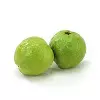Hello, young explorers! Welcome to a fascinating journey where we’ll unravel the secrets of the ‘green fruit name.‘ These delicious fruits hide a world of wonder within their vibrant shades of green. Have you ever wondered why green fruits are so special? They are packed with nutrients that can keep you strong and healthy. Their unique flavours will tantalize your taste buds and excite your snack time.
In this adventure, we’ll introduce you to various green fruits, each with its own story, taste, and benefits. By the end of this journey, you’ll not only know their names but also understand why they are nature’s green gems. So, get ready to explore the green side of nature and discover some amazing ‘green fruit names’ that will make your taste buds dance with joy!”
50+ Green Fruits Names in English And Hindi
| Serial Number | Fruit Names | English Name | Hindi Name |
| 1 |  | Apple | सेब (Seb) |
| 2 |  | Grapes | अंगूर (Angur) |
| 3 |  | Kiwifruit | कीवी फल (Kivi Phal) |
| 4 |  | Green Banana | हरा केला (Hara Kela) |
| 5 |  | Guava | अमरूद (Amrood) |
| 6 |  | Lime | नींबू (Neembu) |
| 7 |  | Green Mango | हरा आम (Hara Aam) |
| 8 |  | Avocado | एवोकाडो (Avocado) |
| 9 |  | Green Papaya | हरा पपीता (Hara Papita) |
| 10 |  | Green Pear | हरा नाशपाती (Hara Nashpati) |
| 11 |  | Green Plum | हरा आलू बुखारा (Hara Aloo Bukhara) |
| 12 |  | Green Tomato | हरा टमाटर (Hara Tamatar) |
| 13 |  | Green Strawberry | हरी स्ट्रॉबेरी (Hari Strawberry) |
| 14 |  | Green Fig | हरा अंजीर (Hara Anjeer) |
| 15 |  | Green Passion Fruit | हरा पैशन फल (Hara Passion Phal) |
| 16 |  | Green Guava | हरा अमरूद (Hara Amrood) |
| 17 |  | Green Lemon | हरा नींबू (Hara Neembu) |
| 18 |  | Green Cherry | हरी चेरी (Hari Cherry) |
| 19 |  | Green Lychee | हरा लीची (Hara Lychee) |
| 20 |  | Green Kiwano | हरा किवानो (Hara Kiwano) |
| 21 |  | Green Olive | हरी जैतून (Hari Zaitoon) |
| 22 |  | Green Dragon Fruit | हरा ड्रैगन फ्रूट (Hara Dragon Fruit) |
| 23 |  | Green Grapefruit | हरा चकोतरा (Hara Chakotra) |
| 24 |  | Green Gooseberry | हरा अवला (Hara Amla) |
| 25 |  | Green Sapodilla | हरा सपोटा (Hara Sapota) |
| 26 |  | Green Horned Melon | हरा शंखफल (Hara Shankhphal) |
| 27 |  | Green Jujube | हरा बेर (Hara Ber) |
| 28 |  | Green Starfruit | हरा करम्बोला (Hara Karambola) |
| 29 |  | Green Jackfruit | हरा कटहल (Hara Kathal) |
| 30 |  | Green Breadfruit | हरा निपात्र (Hara Nipatra) |
| 31 |  | Green Cactus Fruit | हरा सदफल (Hara Sadaphala) |
| 32 |  | Green Crabapple | हरा केक्षर (Hara Kekshara) |
| 33 |  | Green Grape Tomato | हरा अंगूरी टमाटर (Hara Angoori Tamatar) |
| 34 |  | Green Star Gooseberry | हरा फलिनी (Hara Phalini) |
| 35 |  | Green Chayote | हरा सेम (Hara Sem) |
| 36 |  | Green Soursop | हरा ग्रावोला (Hara Gravola) |
| 37 |  | Green Ackee | हरा अकी (Hara Aki) |
| 38 |  | Green Buddha’s Hand | हरा बुद्ध का हाथ (Hara Buddha Ka Hath) |
| 39 |  | Green Longan | हरा द्राक्ष (Hara Draksha) |
| 40 |  | Green Miracle Fruit | हरा आश्चर्यफल (Hara Ashcharya Phala) |
| 41 |  | Green Pummelo | हरा पोमेलो (Hara Pomelo) |
| 42 |  | Green Salak | हरा सालक (Hara Salaka) |
| 43 |  | Green Tamarillo | हरा टमारिल्लो (Hara Tamarillo) |
| 44 |  | Green Ugli Fruit | हरा अद्वितीय फल (Hara Advitiya Phala) |
| 45 |  | White Currant | हरा श्वेतकुसुम (Hara Shvetakusuma) |
| 46 |  | Yangmei | हरा यांगमेई (Hara Yangmei) |
| 47 |  | Green Honeydew Melon | हरा हनीड्यू मेलन (Hara Honeydew Melon) |
| 48 |  | Green Guanabana | हरा गुआनाबाना (Hara Guanabana) |
| 49 |  | Green Mulberry | हरा शहतूत (Hara Shahtoot) |
| 50 |  | Green Durian | हरा ड्यूरियन (Hara Durian) |
| 51 |  | Green Feijoa | हरा फेजोआ (Hara Feijoa) |
Type of Green fruit
There are various types of green fruits, each with its unique flavour, texture, and culinary uses. Here are some common types of green fruits:
1. Green Apples

- Apples: These are known for their crisp texture and slightly tart taste. They are often used in pies, salads, and as a snack.
1. Nutrition Information (per 100 grams) for Apples
| Nutrient | Amount per 100g |
| Calories | 52 |
| Water | 86% |
| Protein | 0.3g |
| Carbohydrates | 14g |
| Sugar | 10g |
| Dietary Fiber | 2.4g |
| Fat | 0.2g |
| Vitamin C | 0.5mg |
| Potassium | 107mg |

2. Benefits of Apples
- Rich in Antioxidants:
- Apples are a great source of antioxidants, including flavonoids and polyphenols. These compounds help neutralize harmful free radicals in the body, reducing the risk of chronic diseases.
- Heart Health:
- The soluble fiber in apples, particularly pectin, has been linked to lower levels of bad cholesterol. Consuming apples regularly may contribute to a healthier heart by supporting optimal cholesterol levels.
- Weight Management:
- With a low calorie and high fiber content, apples can be a satisfying and nutritious snack for those looking to manage their weight. The fiber helps promote a feeling of fullness, potentially reducing overall calorie intake.
3. Uses of Apples
- Snacking:
- Apples are a convenient and portable snack. Their natural sweetness satisfies sugar cravings in a healthier way, making them an excellent choice for a quick and nutritious bite.
- Cooking and Baking:
- Apples are versatile in the kitchen. They can be used in both sweet and savory dishes, such as salads, pies, sauces, and even alongside meats. Their natural sweetness enhances the flavor of various recipes.
- Juicing and Smoothies:
- Apples are commonly used in fresh juices and smoothies. They add a pleasant sweetness and contribute to the overall nutritional profile of the beverage. Combining apples with other fruits and vegetables creates delicious and healthful drinks.
4. Additional Information
- Variety Matters:
- Different apple varieties may have slightly different nutritional profiles and flavors. For instance, red apples like Fuji or Gala may have a sweeter taste compared to green apples like Granny Smith.
- Storage Tips:
- To preserve their freshness and nutritional value, store apples in a cool place or refrigerate them. Avoid bruised or damaged apples, as they may spoil more quickly.
- Organic vs. Conventional:
- Choosing organic apples may reduce exposure to pesticides. However, both organic and conventional apples offer similar nutritional benefits.
2. Green Grapes

- Green Grapes: Green grapes can be sweet and juicy. They are commonly eaten fresh, in fruit salads, or frozen as a refreshing treat.
1. Nutrition Information (per 100 grams) for Green Grapes
| Nutrient | Amount per 100g |
| Calories | 69 kcal |
| Protein | 0.6 g |
| Total Fat | 0.2 g |
| Carbohydrates | 18 g |
| Dietary Fiber | 0.9 g |
| Sugars | 15 g |
| Vitamin C | 3.2 mg |
| Vitamin K | 14.6 mcg |
| Potassium | 191 mg |
| Calcium | 10 mg |
| Iron | 0.4 mg |
| Magnesium | 7 mg |

2. Benefits of Green Grapes
- Rich in Antioxidants: Green grapes contain powerful antioxidants, such as resveratrol and flavonoids. These compounds help protect the body’s cells from oxidative stress and may contribute to a reduced risk of chronic diseases.
- Heart Health: The potassium content in green grapes supports heart health by helping regulate blood pressure. Additionally, the presence of resveratrol has been linked to improved cardiovascular function and the reduction of LDL (bad) cholesterol levels.
- Immune System Support: Green grapes are a good source of vitamin C, which plays a crucial role in supporting the immune system. Vitamin C is essential for the production of collagen, a protein that helps in the repair and maintenance of tissues, as well as in the body’s defense against infections.
3. Uses of Green Grapes
- Snacking: Green grapes make for a convenient and delicious snack on their own. They can be easily washed and enjoyed as a quick and healthy option between meals.
- Salads and Desserts: Add green grapes to fruit salads or green salads for a burst of sweetness and a refreshing touch. They also make a delightful addition to desserts like tarts, fruit salads, or sorbets.
- Juicing and Smoothies: Green grapes can be juiced or blended into smoothies to enhance the flavor and nutritional profile. Combining them with other fruits and vegetables creates a tasty and nutritious beverage.
4. Additional Information
- Hydration: Green grapes have a high water content, contributing to hydration and helping maintain healthy skin.
- Weight Management: With low-calorie and fat content, green grapes can be part of a balanced diet, aiding in weight management.
- Digestive Health: The dietary fiber in green grapes supports digestive health by promoting regular bowel movements and preventing constipation.
3. Kiwifruit

- Kiwifruit: This small, fuzzy fruit has vibrant green flesh and tiny black seeds. It’s sweet, and tangy, and can be eaten independently or added to smoothies and desserts.
1. Nutritional Content of Kiwifruit (per 100 grams)
| Nutrient | Amount |
|---|---|
| Calories | 61 kcal |
| Water | 83.1 g |
| Protein | 1.1 g |
| Carbohydrates | 14.6 g |
| Sugars | 8.9 g |
| Dietary Fiber | 3 g |
| Fat | 0.5 g |
| Vitamin C | 92 mg |
| Vitamin K | 40.3 µg |
| Vitamin E | 1.5 mg |
| Potassium | 312 mg |
| Folate | 25 µg |

2. Benefits of Kiwifruit
- Rich in Vitamin C: Kiwifruit is a powerhouse of vitamin C, providing more than the daily recommended intake in just 100 grams. Vitamin C is essential for immune function, skin health, and antioxidant protection.
- Dietary Fiber for Digestive Health: With 3 grams of fiber per 100 grams, kiwifruit promotes digestive health by aiding in regular bowel movements and supporting a healthy gut microbiome.
- Potassium for Heart Health: Kiwifruit is a good source of potassium, a mineral that plays a crucial role in maintaining blood pressure and supporting overall heart health.
3. Uses of Kiwifruit
- Fresh Consumption: Kiwifruit is commonly enjoyed fresh, either on its own or added to fruit salads. Its sweet and tangy flavor, along with the vibrant green color, makes it a popular choice for a refreshing snack.
- Smoothies and Juices: Kiwifruit adds a burst of flavor and nutrition to smoothies and fruit juices. Its natural sweetness can balance the flavors of other fruits, and its high vitamin C content enhances the nutritional profile of these beverages.
- Desserts and Culinary Applications: Kiwifruit can be used in a variety of desserts, including tarts, sorbets, and pies. It also serves as a unique topping for yogurt or ice cream, providing both taste and visual appeal.
4. Additional Information
- Antioxidant Properties: Kiwifruit contains antioxidants that help protect the body from oxidative stress, reducing the risk of chronic diseases.
- Collagen Synthesis: The vitamin C in kiwifruit plays a crucial role in collagen synthesis, contributing to skin elasticity and joint health.
- Low Calorie and Fat Content: Kiwifruit is a low-calorie and low-fat fruit, making it a suitable choice for those looking to maintain a healthy weight.
4. Green Bananas

- Green Bananas: Green or unripe bananas have a starchy taste and firm texture. They are often used in cooking, especially in dishes like plantains.
1. Nutritional Content (per 100 grams) of Green Bananas
| Nutrient | Amount |
|---|---|
| Calories | 89 kcal |
| Carbohydrates | 22.8 g |
| Sugars | 12.2 g |
| Fiber | 2.6 g |
| Protein | 1.3 g |
| Fat | 0.3 g |
| Vitamin C | 8.7 mg |
| Potassium | 358 mg |
| Magnesium | 27 mg |
| Iron | 0.3 mg |

2. Benefits of Green Bananas
- Rich in Resistant Starch: Green bananas are a good source of resistant starch, which acts as a prebiotic, promoting the growth of beneficial bacteria in the gut. This can contribute to improved digestive health.
- Low in Sugar, High in Fiber: With lower sugar content compared to ripe bananas, green bananas are a suitable option for those monitoring their sugar intake. The high fiber content helps in maintaining digestive regularity and can aid in weight management.
- Vitamin and Mineral Boost: Green bananas provide a notable amount of vitamin C, essential for immune function and skin health. Additionally, they are a good source of potassium, crucial for maintaining proper heart and muscle function.
3. Uses of Green Bananas
- Cooking Ingredient: Green bananas can be used in savory dishes as a starchy ingredient. They are often used in soups, stews, and curries, adding a mild flavor and a hearty texture.
- Gluten-Free Flour Alternative: Green banana flour, made from dried and ground green bananas, serves as a gluten-free alternative to traditional flours. It can be used in baking or as a thickening agent in recipes.
- Healthy Snacking: Sliced and baked green bananas make for a nutritious and crunchy snack. They can be seasoned with various spices for added flavor without compromising on health benefits.
4. Additional Information
- Ripening Process: Green bananas are typically firmer and less sweet than ripe bananas. As they ripen, the starches convert to sugars, altering the taste and texture.
- Nutritional Changes: As bananas ripen, the nutritional composition changes. The resistant starch content decreases, while the sugar content increases. Therefore, the health benefits may vary between green and ripe bananas.
- Storage Tip: To slow down the ripening process, store green bananas in the refrigerator. This helps maintain their firmness and extends their shelf life.
5. Green Pear

- Green Pears: Like the Anjou and Bosc varieties, Green pears are sweet and juicy. They are typically eaten fresh or used in baking.
1. Nutritional Content (per 100 grams) of Green Pears
| Nutrient | Amount |
|---|---|
| Calories | 57 |
| Water | 83.96 g |
| Protein | 0.36 g |
| Carbohydrates | 15.23 g |
| Sugars | 9.80 g |
| Dietary Fiber | 3.1 g |
| Fat | 0.14 g |
| Vitamins and Minerals | |
| – Vitamin C | 3.1 mg (5% DV) |
| – Vitamin K | 4.5 µg (6% DV) |
| – Potassium | 119 mg (2% DV) |
| – Calcium | 9 mg (1% DV) |
| – Iron | 0.17 mg (1% DV) |

2. Benefits of Green Pears
- Rich in Fiber: Green pears are an excellent source of dietary fiber, promoting digestive health and helping prevent constipation.
- Vitamin C Boost: The presence of vitamin C in green pears contributes to a strong immune system, offering antioxidant benefits that protect cells from damage.
- Low in Calories and Fat: With only 57 calories and minimal fat per 100 grams, green pears make for a nutritious, low-calorie snack option, supporting weight management.
3. Uses of Green Pears
- Fresh Snacking: Enjoy green pears on their own as a refreshing and healthy snack.
- Salad Ingredient: Slice or dice green pears to add a sweet and juicy element to salads, balancing flavors and textures.
- Smoothie Addition: Blend green pears into smoothies for a naturally sweet and nutritious twist.
4. Additional Information
- Ripening Process: Green pears can be ripened at room temperature. Once ripe, store them in the refrigerator to maintain freshness.
- Skin Benefits: The skin of green pears contains additional fiber and nutrients. Washing them thoroughly allows you to enjoy these benefits along with the juicy flesh.
- Versatility in Culinary Use: Green pears can be incorporated into a variety of dishes, from desserts like tarts and pies to savory dishes like grilled pear and goat cheese salads. Their versatility makes them a valuable ingredient in the kitchen.
6. Green Guava

- Green Guava: Green guavas are aromatic and sweet. They can be eaten fresh or used in juices, jams, and desserts.
1. Nutritional Content of Green Guava (Per 100 grams)
| Nutrient | Amount |
|---|---|
| Calories | 68 |
| Protein | 2.6 grams |
| Carbohydrates | 14.3 grams |
| Fiber | 5.4 grams |
| Sugars | 9 grams |
| Fat | 0.9 grams |
| Vitamin C | 228 milligrams (380% DV) |
| Vitamin A | 624 IU (12% DV) |
| Folate | 49 micrograms (12% DV) |
| Potassium | 417 milligrams (12% DV) |
| Magnesium | 22 milligrams (6% DV) |
| Calcium | 18 milligrams (2% DV) |

2. Benefits of Green Guava
- Rich in Vitamin C: Green guava is an excellent source of vitamin C, providing more than three times the daily recommended intake per 100 grams. Vitamin C is essential for immune function, skin health, and antioxidant protection against free radicals.
- Dietary Fiber: With 5.4 grams of fiber per 100 grams, green guava promotes digestive health by preventing constipation and supporting a healthy gut. Fiber also helps in maintaining stable blood sugar levels.
- Low in Calories and Fat: Green guava is a low-calorie and low-fat fruit, making it a nutritious option for those looking to manage their weight. The negligible fat content makes it a healthy snack choice.
3. Uses of Green Guava
- Fresh Consumption: Enjoy green guava as a refreshing and nutritious snack by simply slicing it and eating it fresh. It can be included in fruit salads for added flavor and nutritional value.
- Juicing: Green guava can be juiced to make a delicious and vitamin-rich beverage. This juice can be consumed on its own or combined with other fruits for a custom fruit blend.
- Smoothies and Desserts: Incorporate green guava into smoothies for a tropical twist or use it in desserts like sorbets, jams, or fruit salads to enhance the overall taste and nutritional content.
4. Additional Information
- Antioxidant Properties: Green guava contains antioxidants that help neutralize free radicals in the body, potentially reducing the risk of chronic diseases.
- Hydration: Besides its nutritional content, green guava has a high water content, contributing to overall hydration.
- Skin Health: The combination of vitamin C and antioxidants in green guava supports collagen formation, promoting healthy skin and a youthful appearance.
7. Limes

- Limes: Limes are small, green citrus fruits known for their tartness. They are used in various culinary applications, including beverages, marinades, and desserts.
1. Nutritional Content (per 100 grams of raw lime)
| Nutrient | Amount |
|---|---|
| Calories | 30 kcal |
| Water | 88 g |
| Protein | 0.7 g |
| Carbohydrates | 9.3 g |
| Sugars | 1.7 g |
| Fiber | 2.8 g |
| Fat | 0.2 g |
| Vitamin C | 29.1 mg (49% DV) |
| Calcium | 33 mg (3% DV) |
| Iron | 0.6 mg (3% DV) |
| Potassium | 102 mg (2% DV) |
| Magnesium | 6 mg (2% DV) |
| Phosphorus | 18 mg (2% DV) |

2. Benefits of Limes
- Rich in Vitamin C:
- Limes are an excellent source of vitamin C, which is essential for a healthy immune system, skin health, and collagen synthesis.
- Antioxidant Properties:
- Limes contain antioxidants like flavonoids and limonoids, which help neutralize free radicals in the body, potentially reducing the risk of chronic diseases.
- Aids Digestion:
- The fiber content in limes promotes digestive health by preventing constipation and supporting a healthy gut microbiome.
3. Uses of Limes
- Culinary Applications:
- Limes add a zesty and tangy flavor to a variety of dishes, including salads, marinades, beverages, and desserts.
- Beverage Ingredient:
- Lime juice is a popular addition to beverages like cocktails, mocktails, and refreshing limeades. It not only enhances the flavor but also provides a burst of vitamin C.
- Preservation:
- The acidity of limes makes them suitable for preserving and pickling foods. Lime juice can be used to prevent fruits and vegetables from browning.
4. Other Points
- Hydration:
- Limes have a high water content, contributing to hydration and helping maintain fluid balance in the body.
- Weight Management:
- With low calories and negligible fat, limes can be a guilt-free addition to meals for those focusing on weight management.
- Skin Care:
- The vitamin C in limes promotes collagen production, aiding in skin health and potentially reducing signs of aging.
8. Green Mango

- Green Mango: Green or unripe mangoes are firm and tart. They are used in many savoury dishes, chutneys, and pickles.
1. Nutritional Information (per 100 grams of Green Mango)
| Nutrient | Amount |
|---|---|
| Calories | 60 kcal |
| Protein | 0.8 g |
| Carbohydrates | 15 g |
| Fiber | 1.6 g |
| Fat | 0.4 g |
| Vitamin C | 36.4 mg |
| Vitamin A | 54 mcg |
| Calcium | 11 mg |
| Iron | 0.6 mg |
| Potassium | 168 mg |
| Magnesium | 9 mg |
| Phosphorus | 14 mg |

2. Benefits of Green Mango
- Rich in Vitamin C: Green mangoes are an excellent source of vitamin C, an antioxidant that supports the immune system, promotes skin health, and aids in the absorption of iron.
- Dietary Fiber for Digestive Health: The fiber content in green mangoes contributes to digestive health by preventing constipation and promoting a healthy digestive system.
- Low in Calories and Fat: Green mangoes are a low-calorie and low-fat food, making them a healthy snack option for those looking to manage their weight and maintain a balanced diet.
3. Uses of Green Mango
- Raw Mango Salad: Green mangoes are commonly used to prepare refreshing salads. Sliced or grated green mangoes can be combined with vegetables, herbs, and spices to create a tangy and flavorful salad.
- Chutneys and Pickles: Green mangoes are a popular choice for making chutneys and pickles. The sour and tangy flavor of green mangoes adds a distinctive taste to these condiments.
- Smoothies and Beverages: Green mangoes can be blended into smoothies or juices to create refreshing beverages. These drinks not only provide a burst of flavor but also deliver the nutritional benefits of the fruit.
4. Additional Information
- Culinary Uses: Green mangoes are often used in various culinary applications, including curries, sauces, and marinades, where their tartness enhances the overall flavor profile of the dish.
- Ripening Process: Green mangoes can be ripened at room temperature, and as they ripen, they transition from a tangy and firm texture to a sweeter and softer consistency.
- Traditional Medicine: In some traditional medicine systems, green mangoes are believed to have medicinal properties. They are used to address ailments such as heatstroke, dehydration, and gastrointestinal issues.
9. Avocado

- Avocado: Avocado has creamy green flesh and a mild, nutty flavour. It is often used in salads, sandwiches, and guacamole.
1. Avocado Nutrition (Per 100 grams)
| Nutrient | Amount |
|---|---|
| Calories | 160 |
| Total Fat | 14.66 g |
| Saturated Fat | 2.13 g |
| Monounsaturated Fat | 9.80 g |
| Polyunsaturated Fat | 1.82 g |
| Cholesterol | 0 mg |
| Sodium | 7 mg |
| Potassium | 485 mg |
| Total Carbohydrates | 8.53 g |
| Dietary Fiber | 6.7 g |
| Sugars | 0.66 g |
| Protein | 2 g |
| Vitamin A | 146 IU |
| Vitamin C | 10 mg |
| Calcium | 12 mg |
| Iron | 0.61 mg |
| Vitamin D | 0 IU |
| Vitamin B-6 | 0.26 mg |
| Vitamin B-12 | 0 µg |
| Magnesium | 29 mg |

2. Benefits of Avocado
- Nutrient-Rich: Avocados are packed with essential nutrients, including healthy monounsaturated fats, vitamins (like vitamin K, vitamin C, vitamin B-6), and minerals (such as potassium and magnesium).
- Heart Health: The monounsaturated fats in avocados are associated with cardiovascular health. They can help reduce bad cholesterol levels and lower the risk of heart disease.
- Rich in Fiber: Avocados are an excellent source of dietary fiber, promoting digestive health, and helping in maintaining a healthy weight.
3. Uses of Avocado
- Culinary Delight: Avocados are versatile in the kitchen. They can be sliced and added to salads, mashed for guacamole, spread on toast, or even used as a creamy addition to smoothies.
- Healthy Fat Substitute: Avocado can be used as a substitute for butter or other fats in baking. It adds a creamy texture while providing a healthier fat option.
- Skin and Hair Care: The natural oils in avocados make them great for external use. Mashed avocado can be used in DIY face masks and hair treatments for moisturizing and nourishing effects.
4. Additional Information
- Ripening Process: Avocados often need time to ripen after purchase. Placing them in a paper bag with a banana or apple can speed up the ripening process.
- Selection Tips: Choose avocados that yield slightly to gentle pressure when squeezed. The color may vary, but it should feel slightly soft.
- Storage: Once ripe, avocados can be stored in the refrigerator to slow down further ripening. Unripe avocados can be stored at room temperature.
10. Green Papaya

- Green Papaya: Green papaya is used in savoury salads and dishes in many Asian cuisines. It has a mild taste and a firm texture.
1. Nutritional Information (per 100 grams of raw green papaya)
| Nutrient | Amount |
|---|---|
| Calories | 43 |
| Protein | 0.5 grams |
| Carbohydrates | 11 grams |
| Dietary Fiber | 2.5 grams |
| Sugars | 5.9 grams |
| Fat | 0.3 grams |
| Vitamin C | 60.9 milligrams |
| Vitamin A | 28 micrograms |
| Folate | 37 micrograms |
| Potassium | 257 milligrams |
| Magnesium | 21 milligrams |

2. Benefits of Green Papaya
- Rich in Vitamin C: Green papaya is an excellent source of vitamin C, which is known for its antioxidant properties. Vitamin C helps boost the immune system, promotes healthy skin, and aids in the absorption of iron from plant-based foods.
- Digestive Enzymes: Green papaya contains enzymes like papain and chymopapain, which aid in the digestion of proteins. This makes it a popular choice in traditional medicine for improving digestion and relieving digestive issues.
- Low in Calories, High in Fiber: Green papaya is a low-calorie fruit that is high in dietary fiber. The fiber content helps in promoting a feeling of fullness, supporting weight management, and maintaining a healthy digestive system.
3. Uses of Green Papaya
- Salads and Salsas: Green papaya is often used in salads and salsas. It has a mild flavor and a crunchy texture that adds a refreshing element to dishes. Grated green papaya is commonly used in Thai green papaya salad.
- Cooked in Curries: In some cuisines, green papaya is used in savory dishes, such as curries. It absorbs flavors well and can be a nutritious addition to vegetable or meat-based curries.
- Natural Meat Tenderizer: Due to the presence of papain, green papaya can be used as a natural meat tenderizer. It is often used as a marinade for meats to help break down tough fibers and enhance tenderness.
4. More Information
- Traditional Medicine: Green papaya has been used in traditional medicine in various cultures for its potential medicinal properties. It is believed to have anti-inflammatory and wound-healing properties.
- Ripening Process: As green papaya ripens, it transitions to a more orange or yellow color, and its flavor becomes sweeter. The nutritional composition also changes during the ripening process.
- Culinary Uses Worldwide: While green papaya is a staple in some tropical cuisines, its uses have expanded globally. It is appreciated not only for its taste but also for its nutritional content and versatility in various dishes
11. Green Plum

- Green Plum (Green Gage Plum): These small, green plums are sweet and tart. They can be eaten fresh or used in jams and preserves.
1. Nutritional Information (per 100 grams of raw green plums)
| Nutrient | Amount |
|---|---|
| Calories | ~46 kcal |
| Carbohydrates | ~11 g |
| Fiber | ~1.4 g |
| Vitamin C | ~10 mg |
| Vitamin A | ~17 IU |
| Potassium | ~157 mg |

Benefits of Green Plum
- Rich in Vitamin C: Green plums are a good source of vitamin C, an antioxidant that supports the immune system, helps in collagen formation, and contributes to overall skin health.
- Dietary Fiber: The fiber content in green plums can aid in digestion and contribute to a feeling of fullness, which may be beneficial for weight management and digestive health.
- Low in Calories: Green plums are relatively low in calories, making them a healthy snack option for those looking to manage their calorie intake.
Uses of Green Plum
- Fresh Snacking: Enjoy green plums fresh as a snack. Their tart flavor can be refreshing and satisfying.
- Preserves and Pickles: Green plums are often used to make preserves, pickles, or chutneys. Their natural tartness adds a unique flavor to these preparations.
- Baking and Cooking: Green plums can be used in cooking and baking, adding a tangy twist to dishes like sauces, jams, and desserts.
Much More
- Seasonal Delight: Green plums are often available seasonally, and their availability may vary depending on your location. They are a seasonal delight enjoyed by many during the warmer months.
- Traditional Medicine: In some cultures, green plums are believed to have medicinal properties and are used in traditional medicine for various purposes.
- Culinary Diversity: Due to their versatile flavor, green plums are incorporated into various culinary traditions worldwide, contributing to a diverse range of dishes.
12. Green Tomato

- Green Tomato: Green tomatoes are not fully ripe and have a tangy taste. They are used in dishes like fried green tomatoes and pickles.
1. Nutritional Information (per 100 grams of raw Green Tomato)
| Nutrient | Amount |
|---|---|
| Calories | 23 kcal |
| Protein | 1.2 g |
| Carbohydrates | 5.5 g |
| Fiber | 1.5 g |
| Fat | 0.2 g |
| Vitamin C | 23.0 mg |
| Vitamin A | 42 IU |
| Potassium | 204 mg |
| Calcium | 10 mg |
| Iron | 0.4 mg |

Benefits of Green Tomatoes
- Rich in Antioxidants: Green tomatoes, like their ripe counterparts, contain antioxidants, including vitamin C, which help neutralize harmful free radicals in the body. Antioxidants play a crucial role in supporting overall health.
- Low in Calories: With only 23 calories per 100 grams, green tomatoes are a low-calorie food. This makes them a good choice for those looking to manage their calorie intake while still getting essential nutrients.
- Source of Vitamins: Green tomatoes are a decent source of vitamins, particularly vitamin C and vitamin A. Vitamin C is important for immune system health, while vitamin A is essential for vision and skin health.
Uses of Green Tomatoes
- Cooking: Green tomatoes are often used in various culinary dishes. They can be fried, pickled, or used in salsas and chutneys. Fried green tomatoes are a popular Southern dish.
- Pickling: Green tomatoes are suitable for pickling, and pickled green tomatoes can be used as a condiment or added to sandwiches for a tangy flavor.
- Salsas and Chutneys: Green tomatoes add a unique tartness to salsas and chutneys. They can be combined with other ingredients like onions, peppers, and herbs to create flavorful condiments.
Other Points
- Unripe Tomatoes: Green tomatoes are simply unripe tomatoes. As tomatoes ripen, their color changes from green to yellow, orange, red, or other shades depending on the variety.
- Caution with Nightshades: It’s worth noting that tomatoes belong to the nightshade family, and some individuals may be sensitive to nightshade vegetables. If you have dietary restrictions or sensitivities, it’s advisable to consult with a healthcare professional.
- Gardening: Green tomatoes are often harvested before they fully ripen due to various reasons, such as preventing damage from pests or adverse weather conditions. Gardeners may intentionally pick green tomatoes to avoid wastage and use them in different ways.
13. Green Fig

- Green Fig: Green figs have greenish-yellow skin and sweet, juicy flesh. They are often eaten fresh or used in desserts.
1. Nutritional Information (per 100 grams)
| Nutrient | Amount |
|---|---|
| Calories | 74 kcal |
| Carbohydrates | 19.18 grams |
| Fiber | 2.9 grams |
| Protein | 0.75 grams |
| Fat | 0.3 grams |
| Vitamin C | 2 mg |
| Calcium | 35 mg |
| Iron | 0.37 mg |
| Potassium | 232 mg |

2. Benefits of Green Fig
- Rich in Fiber: Green figs are a good source of dietary fiber, promoting digestive health by preventing constipation and supporting regular bowel movements.
- Vitamin C Content: The presence of vitamin C contributes to the antioxidant properties of green figs, helping to combat oxidative stress and boost the immune system.
- Low in Calories: With only 74 calories per 100 grams, green figs make a low-calorie snack option, suitable for those watching their calorie intake.
3. Uses of Green Fig
- Fresh Consumption: Enjoy green figs fresh as a tasty and nutritious snack. They can be sliced and added to fruit salads or eaten on their own.
- Jam and Preserves: Green figs can be used to make jams, preserves, or chutneys. Their natural sweetness makes for delicious spreads on toast or accompaniments to cheese and crackers.
- Desserts and Baking: Incorporate green figs into desserts like cakes, muffins, or pies for added flavor and natural sweetness. They can also be used in baking as a unique and wholesome ingredient.
4. Much More
- Hydration: Figs contain a high water content, contributing to overall hydration when consumed.
- Mineral Source: Green figs provide essential minerals such as potassium and calcium, which are crucial for maintaining healthy bones and supporting proper muscle function.
- Dietary Inclusion: Figs can be included in various diets, including vegetarian and vegan, and can be part of a balanced and nutritious eating plan.
14. Green Passion Fruit

- Green Passion Fruit: Green passion fruit has a sweet and tart flavour. It is used in beverages, desserts, and fruit salads.
1. Nutritional Content (per 100 grams of green passion fruit)
| Nutrient | Amount |
|---|---|
| Calories | 97 kcal |
| Water | 72 g |
| Protein | 2.2 g |
| Carbohydrates | 23.4 g |
| Sugars | 11.2 g |
| Dietary Fiber | 10.4 g |
| Fat | 0.7 g |
| Vitamin C | 30 mg |
| Vitamin A | 1270 IU |
| Iron | 1.6 mg |
| Calcium | 12 mg |
| Phosphorus | 68 mg |
| Potassium | 348 mg |
| Magnesium | 29 mg |

Benefits of Green Passion Fruit
- Rich in Vitamin C: Green passion fruit is an excellent source of vitamin C, which is essential for immune system support, collagen formation, and antioxidant protection against free radicals.
- Dietary Fiber for Digestive Health: The high fiber content in green passion fruit promotes digestive health by preventing constipation and supporting a healthy gut microbiome.
- Antioxidant Properties: The fruit contains various antioxidants that help neutralize free radicals in the body, potentially reducing the risk of chronic diseases and supporting overall health.
Uses of Green Passion Fruit
- Fresh Consumption: Green passion fruit can be eaten fresh by cutting it open and scooping out the juicy, seedy pulp. It is commonly consumed as a refreshing snack.
- Juices and Beverages: The tangy and tropical flavor of green passion fruit makes it a popular ingredient in juices, smoothies, and cocktails.
- Desserts and Culinary Applications: Green passion fruit adds a unique and tart flavor to desserts, such as sorbets, tarts, and sauces. It can also be used in salad dressings or marinades.
Other Information
- Skin Health: The vitamin A content in green passion fruit contributes to healthy skin by promoting cell turnover and supporting skin repair.
- Weight Management: The combination of dietary fiber and relatively low calories makes green passion fruit a good choice for those looking to manage their weight while enjoying a flavorful fruit.
- Culinary Varieties: There are various passion fruit varieties, each with its unique flavor profile. Green passion fruit is one of the varieties, and its taste may differ slightly from the more commonly known purple or yellow varieties.
15. Green Olive

- Green Olive: Green olives are harvested before ripening and taste slightly bitter. They are commonly used in salads and Mediterranean dishes.
1. Nutritional Information (Per 100 grams)
| Nutrient | Amount |
|---|---|
| Calories | 115 kcal |
| Total Fat | 10.7 g |
| Saturated Fat | 1.4 g |
| Polyunsaturated Fat | 0.9 g |
| Monounsaturated Fat | 7.6 g |
| Cholesterol | 0 mg |
| Sodium | 1556 mg |
| Total Carbohydrates | 3.8 g |
| Dietary Fiber | 3.3 g |
| Sugars | 0.5 g |
| Protein | 0.8 g |
| Vitamin C | 3.8 mg |
| Calcium | 88 mg |
| Iron | 3.3 mg |
| Potassium | 42 mg |
| Magnesium | 11 mg |

2. Benefits of Green Olives
- Heart Health: Green olives contain monounsaturated fats, which are heart-healthy fats. They may help reduce the risk of cardiovascular diseases by improving cholesterol levels.
- Antioxidant Properties: Green olives are rich in antioxidants, such as vitamin E and polyphenols. These compounds help neutralize free radicals in the body, protecting cells from damage.
- Anti-Inflammatory Effects: The presence of compounds like oleocanthal in green olives contributes to their anti-inflammatory properties, potentially providing relief from inflammation-related conditions.
3. Uses of Green Olives
- Culinary Purposes: Green olives are commonly used in various culinary dishes, including salads, pizzas, and pasta. They can be enjoyed on their own as snacks or appetizers.
- Olive Oil Production: Green olives are pressed to extract olive oil. Extra virgin olive oil, derived from the first cold pressing, is often considered a healthier cooking oil due to its monounsaturated fat content.
- Mediterranean Diet Component: Green olives are a staple in the Mediterranean diet, known for its health benefits. They add flavor to dishes while providing nutritional value.
4. More Information
- Curing Methods: Green olives undergo curing processes to reduce bitterness and enhance flavor. Common curing methods include water curing, brine curing, and dry curing.
- Varieties: There are various varieties of green olives, each with its unique taste and texture. Some popular types include Manzanilla, Picholine, and Castelvetrano.
- Storage Tips: Store green olives in a cool, dark place or refrigerate them to maintain freshness. Properly sealed containers or vacuum packaging can help preserve their flavor and texture.
Some Types of Green Fruit Which Is Healthy For Kids
Green fruits are generally healthy for kids as they provide a range of essential vitamins, minerals, and dietary fibre. Here are a few green fruits that are particularly beneficial for kids’ health:

- Green Apple: Green apples are a good source of dietary fibre and vitamin C. They can aid digestion and help maintain a healthy weight. Plus, their crisp texture makes them a favourite among many kids.

- Green Grape: Grapes, whether green or red, are rich in antioxidants and natural sugars. Flavor, is a convenient and healthy snack for kids, promoting energy and overall well-being.

- Kiwifruit: Kiwifruit is packed with vitamins C, and K, and dietary fibre. It can help boost the immune system, improve digestion, and support healthy growth in kids.

- Green Banana: Green bananas are an excellent source of resistant starch, a fibre that can help regulate blood sugar levels and promote a feeling of fullness. They also provide essential nutrients like vitamin B6.

- Green Pear: Pears are known for their high fibre content, which aids digestion and helps prevent constipation in children. They are a sweet and juicy option for a healthy snack.

- Avocado: Avocado is a nutrient-dense green fruit with healthy fats, vitamins, and minerals. It’s great for brain development and can be mashed and added to baby food for infants.

- Green Papaya: Green papaya is a good source of vitamin C and dietary fibre. It can aid digestion and is sometimes used in baby food due to its mild flavour.

- Green Plum (Green Gage Plum): Green plums are rich in vitamin C and antioxidants. They can be enjoyed fresh or used in jams and preserves.

- Green Star fruit: Star fruit is low in calories and a good vitamin C and potassium source. Its unique shape and tart-sweet flavour can make it an exciting fruit for kids to try.

- Green Passion Fruit: This fruit is rich in vitamin C and dietary fibre. It can be used in fruit salads or enjoyed as a refreshing drink.
Green Fruits Used as Vegetables
Some green fruits are used as vegetables in culinary applications due to their flavour, texture, and the way they are prepared and consumed. Here are a few examples of green fruits that are often used as vegetables:

- Green Tomato: Green tomatoes are unripe tomatoes with a tangy and slightly sour flavour. They are commonly used in fried green tomato dishes, relishes, and pickles.

- Green Papaya: Green papaya is the unripe stage of the papaya fruit. It has a mild, neutral flavour and is used in savoury salads, Thai dishes like Som Tum, and pickles.

- Avocado: While technically a fruit, avocados are often treated as vegetables in culinary preparations. They have a creamy texture and are used in salads, spreads, and sandwiches.

- Green Bell Pepper: Bell peppers, when harvested before they ripen to red, yellow, or orange, are green and have a slightly bitter taste. They are commonly used in salads, stir-fries, and as a stuffing for dishes.

- Green Eggplant (Thai Eggplant): Some varieties of eggplant, such as Thai eggplant, are small and green. They are used in various Asian dishes, curries, and stews.

- Green Cactus Fruit (Prickly Pear): Cactus fruit is used in various Mexican and southwestern dishes, particularly in salads, salsas, and beverages. It has a unique flavour and texture.

- Green Chayote (Chow Chow): Chayote is a green, wrinkled fruit with a mild flavour and crunchy texture. It is used in salads, soups, and stir-fried dishes.

- Green Plantains: Green plantains are starchy and used in savoury dishes. They are often fried to make plantain chips or tostones (fried green plantains).

- Green Okra: Okra pods are green and used in various cuisines, especially Southern and Creole cooking. They can be added to soups, stews, and gumbo.

- Green Chili Pepper: Green chilli peppers are typically spicier than their mature, red counterparts. They are used in various dishes, salsas, and as a seasoning.
Conclusion
In conclusion, we’ve explored a bunch of amazing green fruits! Green fruit’s names include grapes, apples, and kiwifruits. They are not only tasty but also packed with vitamins and energy. So, don’t forget to enjoy these fantastic green fruits name in your diet. Keep exploring and stay healthy with green fruit’s name!
“Green fruits name are not just delicious; they are also good for your health. Grapes, for example, come in different shades of green and are full of antioxidants that can help keep you strong. Apples, with their crunchy texture, provide a great snack option and are a good source of fibre to keep your tummy happy.
Exploring green fruits’ names is like discovering a treasure trove of nutrients and flavours. So, whether you’re making a colourful fruit salad or simply enjoying a crisp green apple, you’re not just tasting something delicious but also giving your body a healthy boost.
What are some green fruits?
Some green fruits include apples, grapes, kiwifruit, pears, bananas, and limes.
How many fruits are green in colour?
There are numerous fruits with green colours, and the exact count can vary depending on regional varieties and cultivars.
Why are some fruits green?
Fruits are green when they are immature because of the presence of chlorophyll, a pigment responsible for photosynthesis. As fruits ripen, chlorophyll breaks down, revealing other pigments like carotenoids or anthocyanins, leading to colour changes.
Why are fruits green in colour?
Fruits are green because chlorophyll, a pigment used in photosynthesis, reflects green light. As fruits mature and undergo biochemical changes, chlorophyll content decreases, and other pigments become visible, changing the fruit’s colour.
What fruit or vegetable is green?
Many green fruits and vegetables include lettuce, spinach, broccoli, peas, zucchini, cucumbers, and green beans.
Can you eat green fruit?
Yes, you can eat green fruits. Some fruits, like green apples and green bananas, are commonly eaten when they are unripe and green. Others, like grapes and kiwifruit, are typically eaten when they ripen and turn sweeter.
Why are some foods green?
Foods can be green due to chlorophyll or other natural pigments. The green colour in vegetables and fruits indicates their freshness and nutritional content.
What are 10 green foods?
Ten green foods include broccoli, spinach, kale, peas, apples, cucumbers, avocados, kiwifruit, green beans, and lettuce.
What are the top 10 green vegetables?
The top 10 green vegetables include broccoli, spinach, kale, peas, green beans, Brussels sprouts, asparagus, zucchini, collard greens, and Swiss chard.
Which are green vegetables?
Green vegetables are those with green-coloured edible parts, primarily leaves or stems. They are rich in essential nutrients, particularly vitamins, minerals, and dietary fibre.
What are the 20 vegetables?
There are many vegetables, but here are 20 common ones: tomatoes, carrots, bell peppers, onions, potatoes, sweet potatoes, eggplants, cauliflower, celery, cabbage, corn, okra, radishes, beets, turnips, artichokes, butternut squash, pumpkin, mushrooms, and leeks.
What are the 15 vegetables?
Some examples of 15 vegetables include lettuce, spinach, kale, broccoli, peas, green beans, cucumbers, bell peppers, tomatoes, carrots, zucchini, asparagus, Brussels sprouts, cauliflower, and celery.
What foods are all green?
All green food includes vegetables like leafy greens (spinach, lettuce, kale), green beans, peas, broccoli, zucchini, cucumbers, and some fruits like green apples and green grapes.

Dilip Kumar De is a highly experienced professional with a 40-year tenure as the Head of Department in Botany. He holds a Research Doctorate and a Master of Science degree in Botany/Plant Biology from the University of Calcutta. Dilip is a skilled Botanist, Plants Specialist, Teacher, and Lecturer, impacting numerous students throughout his career.
His expertise isn’t limited to academics; Dilip is also an adept leader, managing multicultural teams and emphasizing effective communication between parents and teachers. Proficient in Bengali, English, and Hindi, he has a strong ability to connect with diverse audiences.
Since December 2004, Dilip has been self-employed, showcasing his entrepreneurial spirit in the field of Botany. His dedication to education and community development is evident through his non-profit work. His journey is a testament to his unwavering dedication to Botany, higher education, and leadership, leaving a significant mark in his field.


